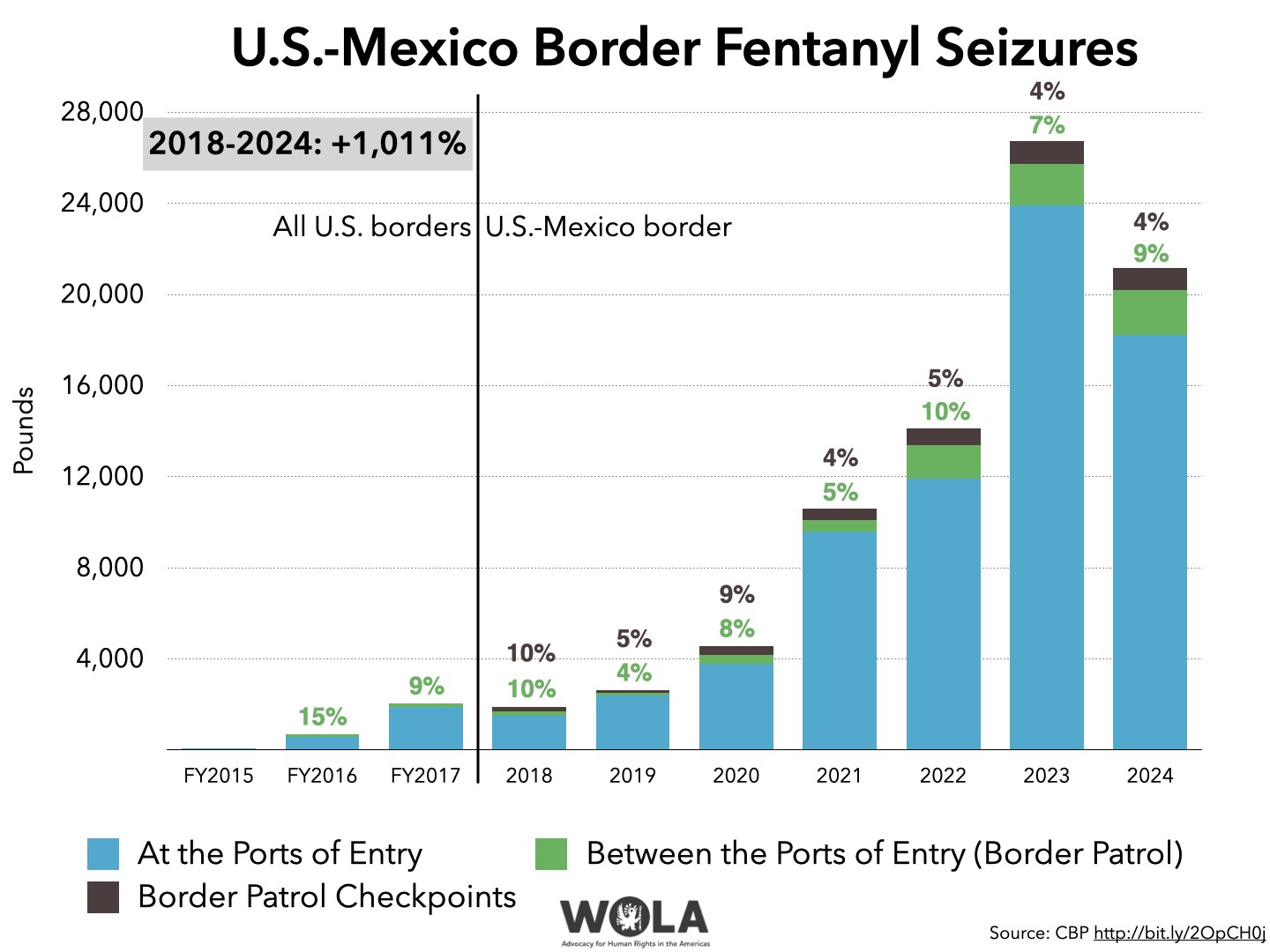
Recent data from U.S. Customs and Border Protection (CBP) reveals a shifting landscape in drug trafficking along the U.S.-Mexico border. California remains the primary entry point for methamphetamine, while fentanyl smuggling routes appear to be moving eastward.
In the fiscal year 2024, which concluded on September 30, CBP intercepted over 275,000 pounds of illegal drugs along the Southwest border. Nearly half of these seizures took place at the California-Mexico border, highlighting the state's continued significance in drug interdiction efforts.
California maintained its position as the leading point of entry for methamphetamine, with authorities seizing more than 101,000 pounds of the drug. This substantial figure underscores the ongoing challenges faced by law enforcement in curbing the flow of this particular substance.
However, a notable shift has occurred in fentanyl smuggling patterns. While San Diego was once the primary entry point for this synthetic opioid, Arizona has now taken the lead for the second consecutive fiscal year. CBP officials in Arizona confiscated over 13,000 pounds of fentanyl, nearly doubling the amount seized in California.
The U.S. government has prioritized efforts to combat fentanyl trafficking due to the drug's potency and lethality. Operation Apollo, a multi-agency initiative, has yielded impressive results over the past two fiscal years. Troy Miller, a senior CBP official, reported that the operation has intercepted more than 50,000 pounds of fentanyl at U.S.-Mexico border crossings during this period.
Miller emphasized the magnitude of this seizure, stating, "That's more than enough to produce more than 2 billion lethal doses of fentanyl." The operation's success extends beyond fentanyl, with additional seizures including methamphetamine, cocaine, weapons, and illicit funds totaling $7.5 million.
The data also reveals that drug traffickers continue to favor personal vehicles and commercial trucks for smuggling. In California, a staggering 90% of all drug seizures occurred at official ports of entry, such as San Ysidro, Otay Mesa, and Calexico.
As law enforcement agencies adapt to these evolving smuggling trends, cooperation between U.S. and Mexican authorities remains a key component in the ongoing battle against drug trafficking across the Southwest border.